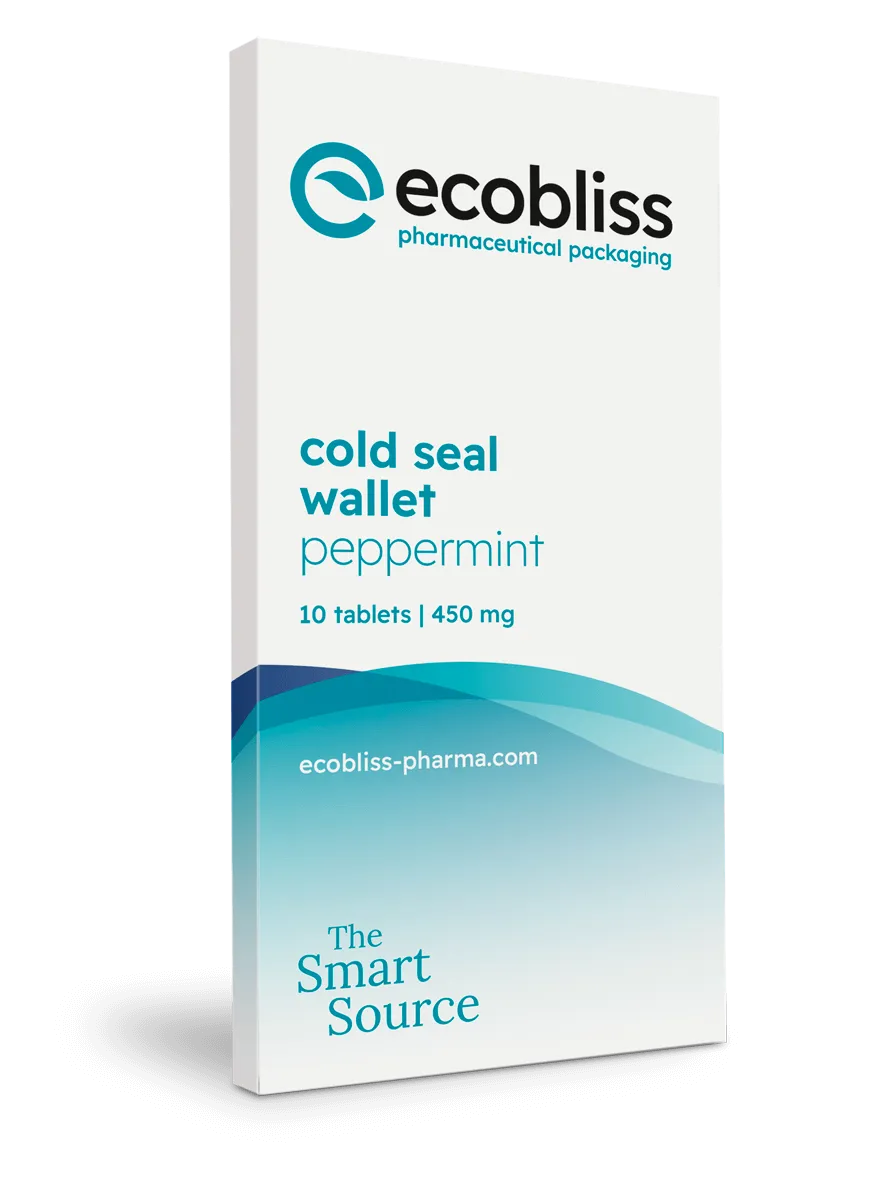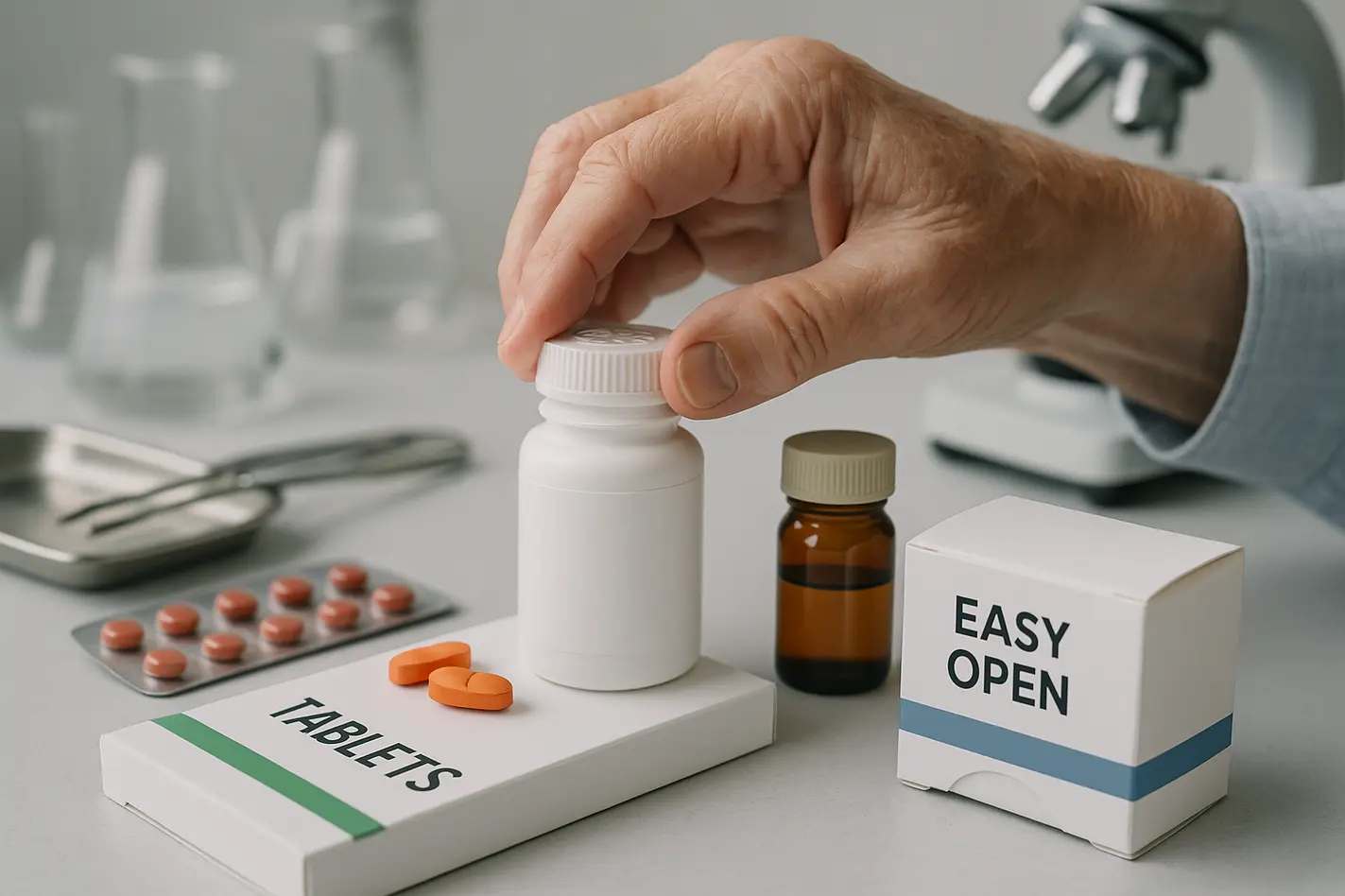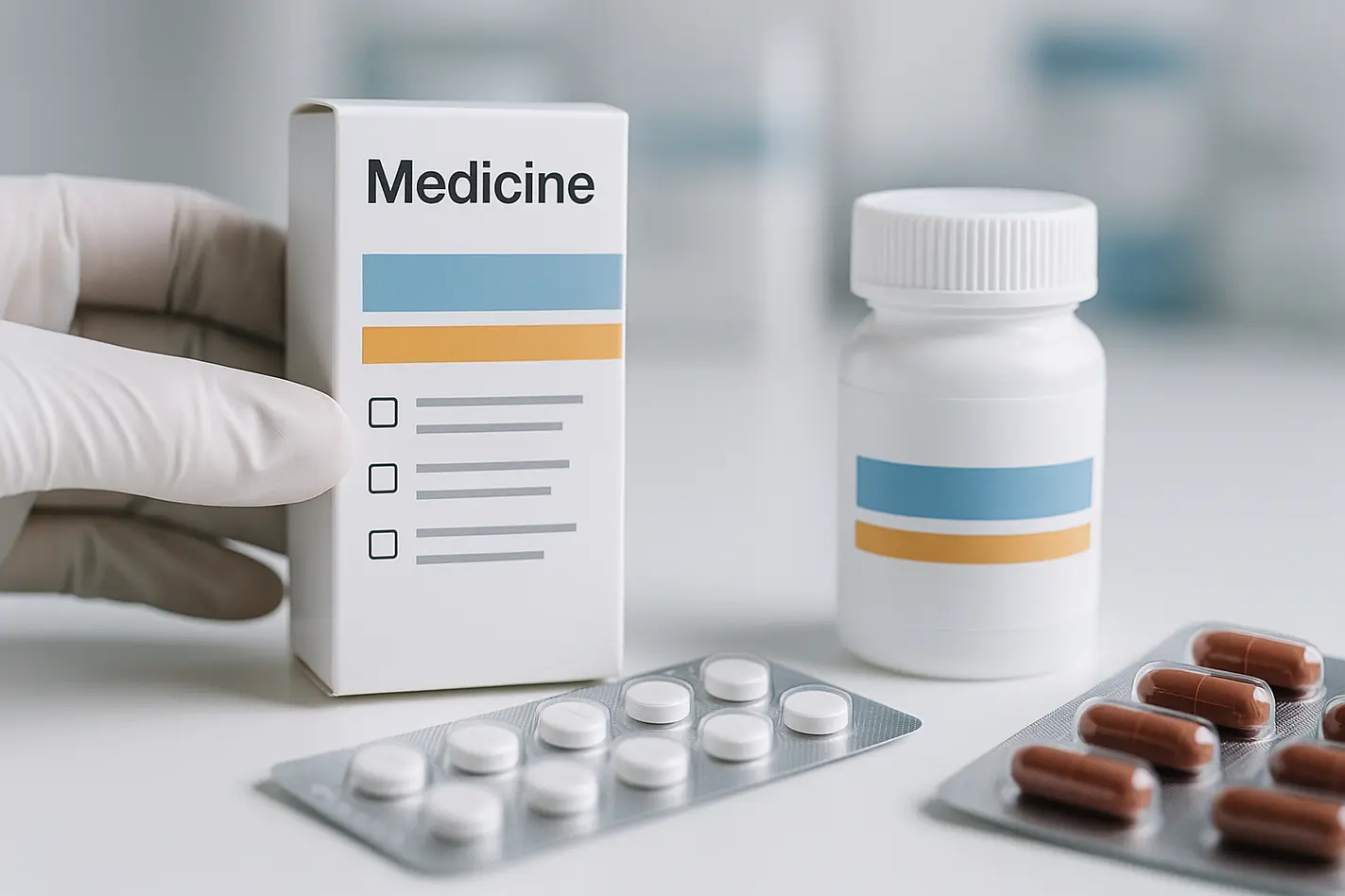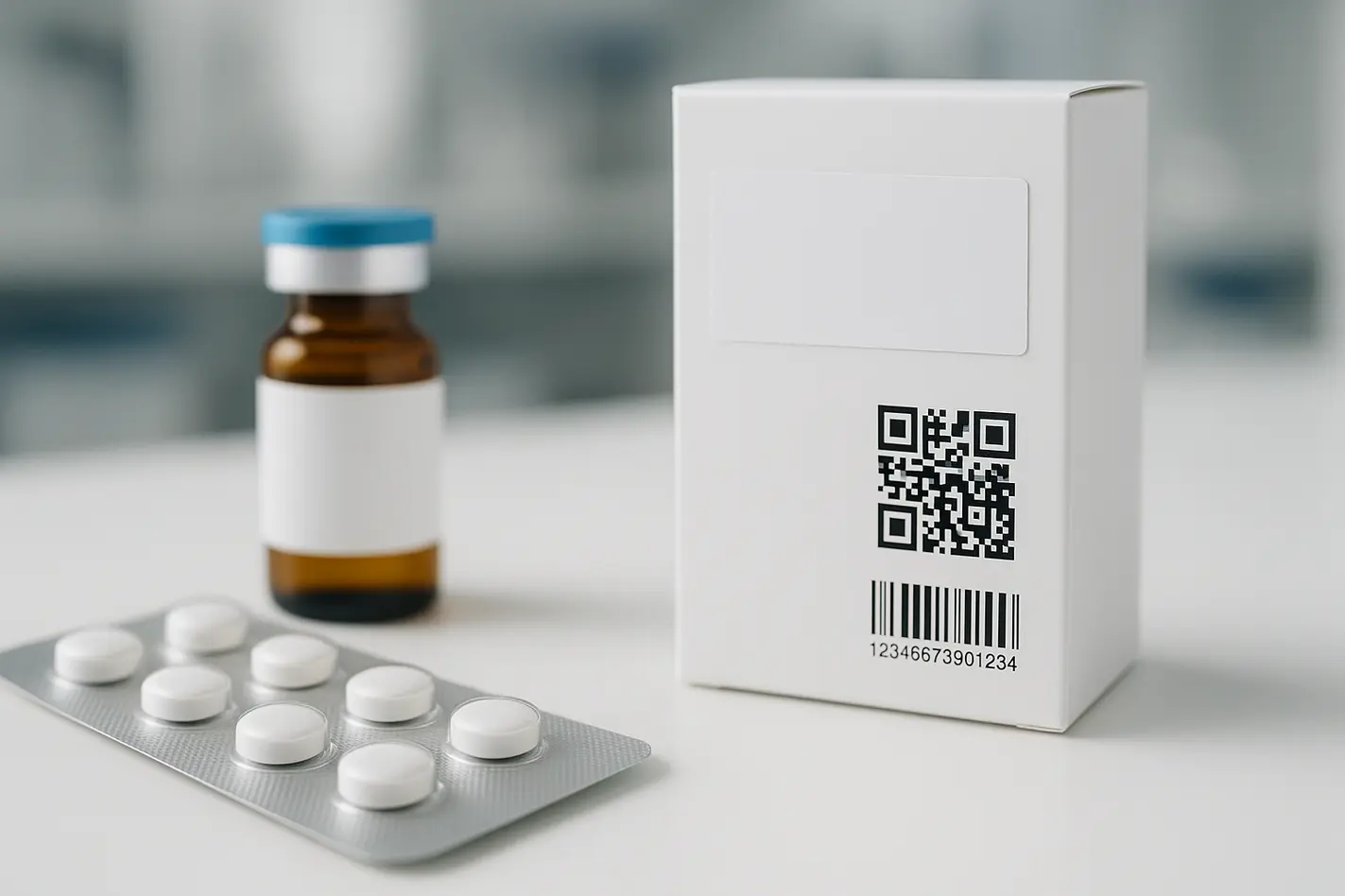Elderly friendly closures in medicine packaging make it easier for older adults to open and take their medicine safely. They are designed to support limited hand strength, poor vision, and slower movement while still keeping children safe. These features reduce errors, improve adherence, and increase daily comfort for older users. Effective designs often combine special closure types with supportive secondary packaging like wallets or adapter cards.
• Senior-friendly closures use low-force opening and clear grip zones to help with reduced hand strength.
• Easy-open pack formats still meet child-resistant safety standards like ISO 8317.
• Visual tools like color bands and large text improve clarity for older adults.
• Secondary packaging, such as wallets, adds guidance and daily-use support without changing the primary blister or bottle.
• Tested senior-friendly designs can reduce errors, returns, and support calls in actual medicine use.
Why accessibility matters in elderly friendly closures medicine packaging
Older adults may struggle with medicine packaging because of conditions like arthritis, hand tremors, or weaker grip strength. This can make it painful or hard to open a blister or bottle. When patients cannot access their medication easily, they may take the wrong dose or miss doses. This risk is high in treatments for heart problems, diabetes, or long-term pain, where adherence matters. Many standard packs focus on strength or protection. However, strong seals or complex openings often prevent ease of use for seniors. Elderly friendly closures improve safety by reducing opening force and giving clear guidance.
How to balance senior access with child safety
Pharmaceutical packaging must stop children from opening dangerous medicine. That is why child-resistant (CR) closures are common, and many markets follow strict CR laws. However, typical CR solutions may also block older users or lead to improper use. Rules like ISO 8317 require both child resistance and adult-access tests. These standards measure if older adults can open the package within a set time without tools or instructions. CR packaging can still be accessible if it's designed well. Timed or multiple-step mechanisms, visual zones, or textured grips can stop small children while guiding adult use. We design child-resistant features that support adult usability with this balance in mind.
Design choices that support older users
Good packaging for older patients includes features that match their physical needs. These features can reduce mistakes and give users more confidence when opening the product. Some helpful elements are:
• Clear opening zones: visual or tactile cues that show where to start opening
• Larger grip surfaces: more space for hands to hold and press
• Low-force openings: easier to push, pull, or peel without causing pain
• Textured grip aids: added roughness gives control for shaky or weak hands
Other support includes large-font instructions, high contrast between text and background, and icons that are easy to understand. These choices also help patients with cognitive decline or memory issues.
Helpful closure types for easy opening
Certain closure formats improve ease-of-use for older hands. Peel-push blisters let users peel back a section of foil before pressing the tablet. This lowers the needed force. Push-through packs can have added grip textures or shapes that support the finger. For reclosable formats, sliders or tabs are easier than hard caps, especially for one-handed use. These design choices help without changing drug protection. If the primary container design cannot change due to regulations or shelf-life, smart secondary packaging can still add value. For example, we apply adapter card that adds guided, adult-friendly access. It gives a steady, repeatable routine for the user and keeps children blocked by design locks or motion steps.
Reducing mistakes with better packaging design
Seniors face risks that go beyond opening strength. They may confuse packs that look alike, mix up medicines of different strengths, or lose track of timing. These problems can lead to serious health issues. Design must include features that help separate strengths and show when and how a dose should be taken. For multi-dose treatments, we often use wallet packs. One example is the guided wallet pack for multi-strength tablets, which supports users in finding the right pill at the right time. These packs use spacing, color, and day markers to avoid confusion and help both home users and pharmacy staff.
Designing for clear instructions and comfort
Older adults need more visual and physical help than younger users. Practical cues can include:
• Starter tabs that are easy to see and pull
• Tactile grip zones to feel control when pressing or peeling
• Color-coded strength bands to avoid errors in medicine type
We recommend using simple language in labels and instructions. Fonts should be larger than average, using bold lines and strong contrast with the background. Some packs include QR codes, which link to digital reminders or step-by-step instructions, especially useful for daily therapies or patients with memory challenges.
How secondary packaging adds support
Blister and bottle packs are often fixed due to format rules, shelf life, or regulatory approval. Changes to these primary packs are not always possible. However, smart secondary packaging creates extra access help. Wallet-style formats let us guide users without changing the core medical container. These formats work well for chronic conditions with multiple strengths or scheduled use. We can add simple directional arrows, pull rails, or spacing that improves hand movement. In this way, we give structure and support for older adults while following all rules for medicine quality and safety.
How we test and build packs for seniors
We design custom CR wallet packs that combine safety and accessibility. These packs are made using a cold-seal method, which avoids heat and protects sensitive medicines. It also supports gentle, grip-friendly openings. Every closure or secondary aid is tested in our process. We work with real users to measure grip strength, success rate, and how quickly and safely the pack can be opened. Designs are adjusted based on data, such as average push or peel force across elderly test users. This way, usability is not a guess but a result of observation and validation. For development of new packs or refresh of existing ones, see how we design around human needs and packaging objectives.
Eco-friendly, safe, and ready to produce
Senior-friendly packaging can also meet eco goals. Our wallet designs use board-based material that is recyclable. We use water-based adhesives and avoid making materials heavier in order to create usability. With proper force design and surface layout, packs stay light while supporting function. All choices are made with product stability, user ease, and final recyclability in mind.
Planning your packaging from start to line-ready
Usability needs to be part of the full development cycle. We support clients from early concept to production. Our lines are flexible for low to mid volumes, which suits specialty drugs and therapies for older adults. We help with GMP compliance, late-stage customisation, and visual safety cues. Whether the goal is a redesign, lifecycle extension, or a new product launch, usability and CR can be built together. If you are exploring an update or build, start with a quick look at fit. Use our feasibility check to assess user-friendly fit in your project.
FAQ
What makes medicine packaging easier for older adults?
User-friendly blister packs and closures often use larger text, grip zones, low-force opening, color-coded guidance, and clear visible instructions. These help reduce effort and prevent mistakes.
Is senior-friendly packaging also safe for children?
Yes. Well-designed packages can meet child-resistant rules, such as ISO 8317, while still being tested for access by older adults. These designs often include timed steps or force levels that match both goals.
Can companies improve usability without changing bottle or blister shape?
Yes. Secondary packaging like guide wallets or adapter cards can be added to support elderly users. These formats add cues and structure without requiring changes to the main container.
Request a free sample now!









